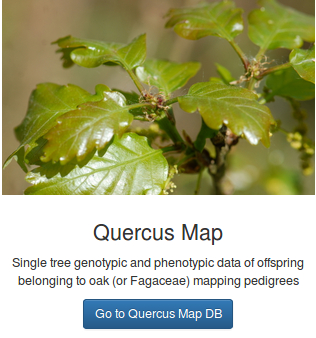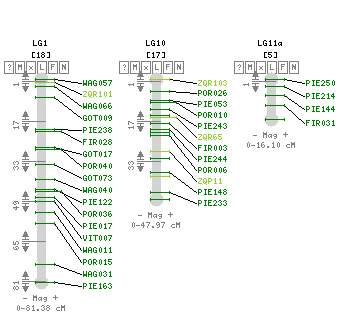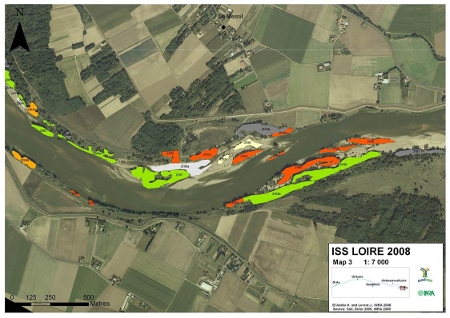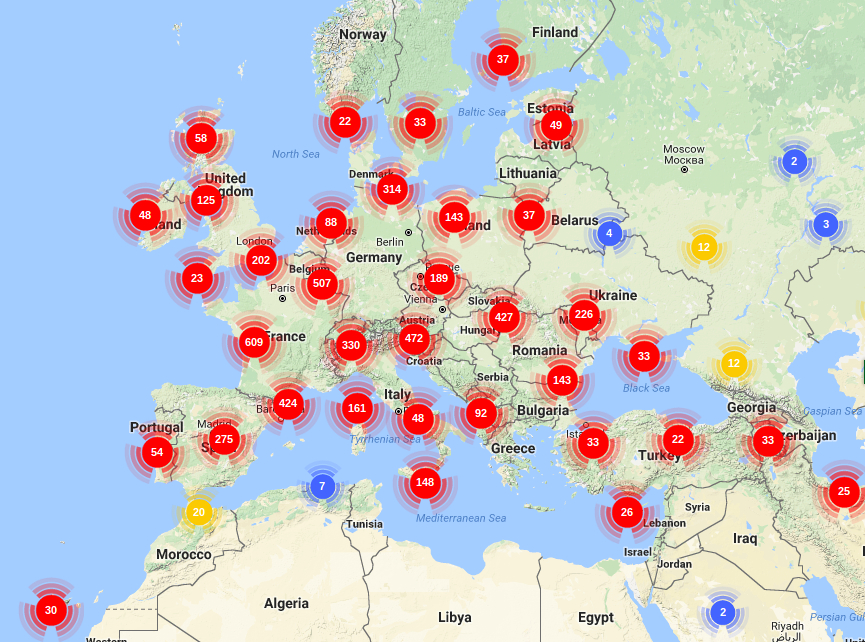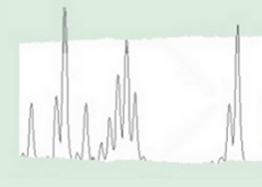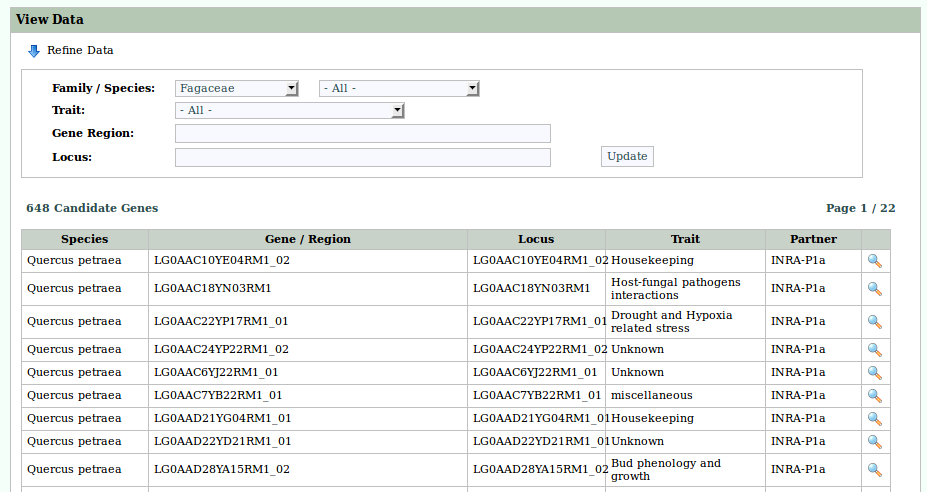TAXONOMY BIOGRAPHY
A. S. ØRSTED
Anders Sandøe Ørsted (1816-1872) was a Danish botanist, mycologist, zoologist and marine biologist. In his early career he worked mostly on artic nematodes and marine algae before travelling extensively and concentrating on the flora he observed during his travels. Øersted worked as a teacher in Copenhagen from 1839-1844 before making a trip to the West Indies and Central America in 1845-1848. Staying six weeks in Jamaica he collected plants alongside the Scots Gilbert McNab and James Macfadyen and ascended the Blue Mountain Peak. He also collected extensively in Nicaragua and Costa Rica, building up such an expertise in the region that F.W. Pennel in 1946 called him "the most important botanist of Central America". He published many papers on his botanical findings in Central America and the West Indies, being especially interested in the Acanthaceae and Fagaceae families. His major work L'Amérique Centrale was published in 1863, and plant taxa named after him include the orchid genus Oerstedella Reichenbach f.
Ørsted (1871) can too be credited for recognizing an important Asian group of oaks hardly known at the time and originally associated with Cyclobalanus the cycle-cup oaks of subtropical and tropical East Asia, which Ørsted considered distinct from Quercus as genus: Cyclobalanopsis, within his subtribe Quercinae; this concept is still used for the Flora of China (Huang et al. 1999; Flora of China 2016). Ørsted recognized five subgenera with a total of 16 sections and about 184 species. His work is the first to treat oaks in a global context.
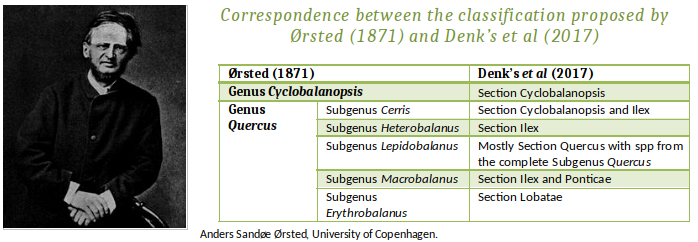
Major monoigraphs by A. S. Ørsted about oaks
Ørsted, A.S. 1863. L'Amérique Centrale: Recherches sur sa flore et sa géographie physique.
Bibliography
Spärck, R. 1932. Anders Sandöe Örsted, pp. 128-130 in: Meisen, V. Prominent Danish Scientists through the Ages. University Library of Copenhagen 450th Anniversary. Levin & Munksgaard, Copenhagen.W. TRELEASE
William Trelease (1857-1945) was an American botanist, entomologist, explorer and writer. He was a professor of botany in the University of Harvard, Wisconsin and Washington in St. Louis, also a special lecturer in botany at Johns Hopkins University and the director of the Missouri Botanical Garden. He was active in a large number of municipal and professional academic associations and was the first President of the Botanical Society of America in 1894.
Trelease was amongst the scientists on the two-month expedition to Alaska led by Edward Henry Harriman in 1899. In 1932 he led a botanical expedition to the Canary Isles and Spain and to New Zealand on 1933.
Trelease was the first botanist to establish the tripartition of the genus Quercus in the Americas: sections Quercus, Lobatae and Protobalanus.
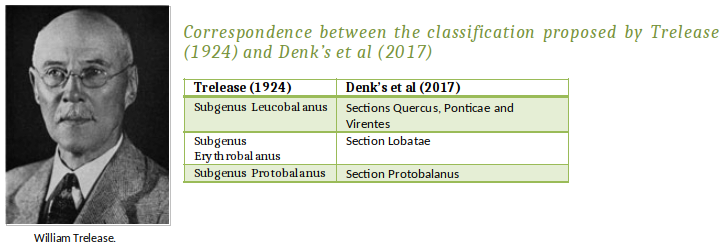
Major monoigraphs by W Trelease about oaks
Trelease W 1924. The American oaks. Memoirs of the National Academy of Science. Volume XX, 255p
Bibliography
Brummitt, R. K. and Powell C. E. 1992. Authors of Plant Names. Royal Botanic Gardens, Kew.A. A. CAMUS
Aimée Antoinette Camus (1879-1965) was the daughter of Edmond Gustave Camus a renowned French botanist and pharmacist. She spends all her career at the Museum d’Histoire Naturelle in Paris, where she wrote her monumental work on the genus Quercus (Les Chênes), but also Castanea, Cupressus… and others. She and her father assembled a herbarium comprising more than 50.000 specimens.
In the years between the publication of Les Chênes and her first botanical contribution in 1894 at the age of fifteen, Aimée Camus published hundreds of scientific articles and authored or coauthored several major monographs. Her published work covers an incredible number of plant families and genera: Salix, Cupressus, Carpinus, Castanopsis, Castanea, Lithocarpus, Quercus, bamboos and other grasses, orchids, etc. In addition to her major work in systematics, Aimée Camus authored works of popular science and was heavily involved in many studies attempting to determine the economic value of indigenous plants arriving from the French colonies.
Les Chênes was published in a collection called the Economic Encyclopedia of Forestry along with Robert Hickel’s Forestry Dendrology, Arturo Bruttini’s Forestry Dictionary, and the Camus monographs on bamboo, Cupressus, Castanea and Castanopsis. Les Chênes is to this day the most comprehensive classification that has ever been attempted of the genus; if we compare the oak classifications that have been proposed since; we find that although different groups of species within the genus were given different grades by different authors, they all recognized more or less the same major groups.
Madame Camus writes at the end of her introduction to Les Chênes, “The oak forest that enabled our ancestors to fight against hunger, cold, darkness, that gave them shelter, weapons, construction materials, furniture, boats, means of transport, is today in part free from these obligations. Coal, iron, cement, concrete are all replacing wood; but the Oak with its qualities remains of great usefulness to man and its protection is of the utmost importance. Further, while industrial expansion has brought ugliness to so many places, is not the forest one of the last havens of beauty?”
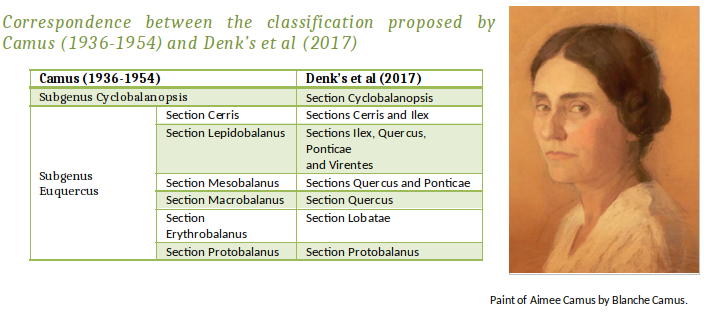
Major monoigraphs by W A. Camus about oaks
The Monograph on Quercus Comprises Three Volumes (Tome I, Ii and Iii). volume iii is subdivided in two books it also comprises in the last volume a monograph of the Genus Lithocarpus.- Camus A. (1936-1938). Monographie du genre Quercus. Tome I. Genre Quercus. Sous-genre Cyclobalanopsis et sous-genre Euquercus (Section Cerris et Mesobalanus). Editions Paul Lechevalier (Paris). Encyclopédie économique de sylviculture VI. 695 pages
- Camus A. (1938-1939) Monographie du genre Quercus. Tome II. Genre Quercus. Sous-genre Euquercus (sections Lepidobalanus et Macrobalanus). Editions Paul Lechevalier (Paris). Encyclopédie économique de sylviculture VII. 830 pages
- Camus A. (1952-1954) Monographie du genre Quercus. Tome III (1ere partie). Genre Quercus. Sous-genre Euquercus (sections Protobalanus et Erythrobalanus). Editions Paul Lechevalier (Paris). Encyclopédie économique de sylviculture VIII. 664 pages
- Camus A. (1952-1954) Monographie du genre Quercus.Tome III (2ième partie). Genre Quercus. Sous-genre Euquercus (sections Protobalanus et Erythrobalanus). Monographie du genre Lithocarpus Editions Paul Lechevalier (Paris). Encyclopédie économique de sylviculture VIII. 650 pages
- Camus A. (1934) Monographie du genre Quercus. Atlas. Tome I. Sous-gernre Cyclobalanopsis. Sous-genre Euquercus (Section Cerris and Mesobalanus). Editions Paul Lechevalier (Paris). Encyclopédie économique de sylviculture VI. 108 paintings
- Camus A. (1935-1936) Monographie du genre Quercus. Atlas. Tome II. Sous-genre Euquercus (Section Lepidobalanus). Editions Paul Lechevalier (Paris). Encyclopédie économique de sylviculture VII. 186 paintings
- Camus A. (1948) Monographie des genres Quercus et Lithocarpus. Atlas. Sous-genre Euquercus (sections Protobalanus et Erythrobalanus) et genre Lithocarpus. Editions Paul Lechevalier (Paris). Encyclopédie économique de sylviculture VIII. 325 paintings
Bibliography
Béatrice C. 2013. Madame Aimée Antoinette Camus: One of the Last Great Amateurs. International oaks 24: 35-47O. K. A SCHWARZ
Otto Karl Anton Schwarz (1900-1983) born in Turingia, Germany, was a botanic professor in Turquia (1931-1934) and in Jena (1946-1970) publishing at least 341 IPNI (International Plant Names Index) of new species with a large herbarium including a great number of ferns, preserved now in the "Herbarium Haussknecht" of the University of Jen where he was a curator until 1966.
Schwarz also followed in principle the concepts of Ørsted in the classifications of Oaks, but raised his categories, erecting a two tribe system (Cyclobalanopsideae, Querceae) with two genera each (Cyclobalanopsis + Erythrobalanus, Macrobalanus + Quercus). A novelty in the system of Schwarz was the subgenus Sclerophyllodrys, in which he accommodated many sclerophyllous oaks of Eurasia, Trelease’s subgenus Protobalanus (including an Asian series Spathulatae), and six evergreen series of Trelease’s subgenus Erythrobalanus. Another major difference relative to Camus was that Schwarz adopted Ørsted’s global concept by grouping North American and Eurasian white oaks in the same sections (Dascia, Gallifera, Prinus, Roburoides).

Bibliography
Council of Heads of Australasian Herbaria Australian National Herbarium, Biographical Notes. Australian National Herbarium.K. G. T. KOTSCHY
Karl Georg Theodor Kotschy (1813-1866) was an Austrian botanist and eminent plant explorer. He studied theology in Vienna from 1833 onwards, but soon became more interested in botany.
He travelled extensively in the Osman Empire, reaching the source of the Pyramos River (today Ceyhan River) in Northern Kurdistan. During these expeditions he collected an immense amount of plants, with over 300,000 herbarium sheets known in different European collections today.
He collected oaks on almost all his journeys. His expeditions to the “Orient” were summarized in the publication of Die Eichen Europa’s und des Orient’s (Oaks of Europe and the Orient). This work gives very accurate descriptions of each plant and its determination, its local usage and vernacular names, and also indicates how it performs (or could do so) in Western cultivation.
Kotschy described 40 species of oaks in this work, some of them new to science. Today, some of the species names he used have sunk into synonymy, but they show the variability of certain oak taxa. Some of the illustrated oaks are rare instances of species that even today are not fully known, such as Quercus look. Kotschy from the borderland between Israel and Lebanon.

Major monoigraphs by K.G.T. Kotschy about oaks
Kotschy K.G.T. 1858-1862. Eichen Europa's und des Orient's. Gesammelt, zum theil neu entdeckt und mit hinweisung auf ihre culturfähigkeit für Mittel-Europa &c., Die. 1858-1862.
Bibliography
Austrian Biographical Encyclopaedia 1815-1950 (ABL). 1969. Volume 4 Austrian Academy of Sciences. p.160Y. L. MENITSKY
Yuri Leonárdovich Menitsky (1937-2001) was a Russian botanist of the University of the State of Saint-Petersbourg that created one of the most complete accounts of Asian oak taxa in 1984 in his book “Generis Quercus L. species asiae austro-occidentalis” where, except for a single species (Quercus suber) he placed all Ilex oaks in subgenus Heterobalanus, while Cerris oaks formed one of the two sections in subgenus Quercus. Menitsky’s accounts are the only morphology-based system that correctly identified the natural groups of Eurasian oaks, confirmed later by palynological and molecular data. In the same way, Trelease’s sections of American oaks also have been confirmed as natural groups.
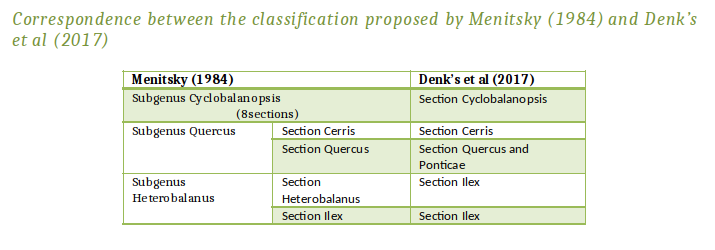
Major monoigraphs by Menitsky Y.L. about oaks
Menitsky Y.L. 1976 Novosti Sist. Vyssh. Rast. 1976 (translated as Oaks of Asia 1984)
Bibliography
Denk T., Grimm G.W., Manos P.S., Deng M., Hipp A.L. 2017. An Updated Infrageneric Classification of the Oaks: Review of Previous Taxonomic Schemes and Synthesis of Evolutionary Patterns. Oaks Physiological Ecology. Exploring the Functional Diversity of Genus Quercus L. Springer International Publishing. 547 pages.K. C. NIXON
Kevin Nixon is a professor in Global Vegetation and Plant Biodiversity, advance Plant Systematics, Tropical Plant Families, and on theory and methods of analysis in Phylogenetic Systematics in the School of Integrative Plant Science at the Cornell University in New York. He works at the generic and species level within Fagaceae, in particular with Quercus and with Late Cretaceous angiosperm floral remains from the Tertiary Fagaceae.
Nixon continues with the classification of Camus but merged her sections Cerris, which Cerris and Ilex oaks, and Euquercus, comprising the remaining Ilex oaks and the white oaks, into a single section Quercus. With this, the genus Quercus is divided into two subgenera, the cycle-cup oaks (Cyclobalanopsis) and all remaining oaks (Quercus). This last one includes two natural sections: the red oaks (sect. Lobatae) and intermediate oaks (sect. Protobalanus). And lastly, an artificial northern hemispheric section Quercus including all white oaks, Cerris and Ilex oaks.
Nixon’s concept of a section Quercus including all white oaks, Cerris and Ilex oaks primarily relies on the basal position of aborted ovules in these groups. This feature is variable in different oak species, and Camus (1936–1938) emphasized that this trait is stable not only within a species, but also characterizes groups of species. Nixon also adopted Camus’ concept of subgenus Cyclobalanopsis (aborted ovules always apical). However, apical abortive ovules are also found in most but not all subsections of sect. Erythrobalanus and in the Castanoid genera; therefore, Nixon suggested that basal abortive ovules are a synapomorphy of his sect. Quercus. Subsequent work has shown that the position of aborted ovules in the mature seeds of Quercus is the result of different developmental process and not as stable as initially assumed.

Major monoigraphs by Nixon K.C. about oaks
- Cornell, CALS (College of Agriculture and Life Sciences) School of Integrative Plant Science. Plant Biology Section. Diversity of Genus Quercus L. Springer International Publishing. 547 pages.
- Nixon, K. C. 2006. Global and neotropical distribution and diversity of oak (genus Quercus) and oak forests. Ecological Studies. 3-13
- S. Manos, Paul & J. Doyle, Jeff & C. Nixon, Kevin. 1999. Phylogeny, Biogeography, and Processes of Molecular Differentiation in Quercus Subgenus Quercus (Fagaceae). Molecular phylogenetics and evolution. 12. 333-49.
- Nixon K. C. Carpenter J. M. 1996. On simultaneous analysis. Cladistics. 12:221-241
Bibliography
Denk T., Grimm G.W., Manos P.S., Deng M., Hipp A.L. 2017. An Updated Infrageneric Classification of the Oaks: Review of Previous Taxonomic Schemes and Synthesis of Evolutionary Patterns. Oaks Physiological Ecology. Exploring the FunctionalPrincipal Collaborators of the new established classifications of the Quercus genus
T. DENK
Thomas Denk is a senior curator from the Department of Palaeobiology in the Swedish Museum of Natural History. His current research is focus in the respond of various plant groups to climate and environments changes over different time scales, particularly the Fagaceae with a major focus on the genus Quercus and different families (Aquifoliaceae, Rosaceae, Sapindaceae, etc). He also investigates the vegetation development in the Mediterranean region during the Neogene and in Arctic regions during the Cenozoic.

Thomas Denk. Swedish Museum of Natural History.
P. S. MANOS
Paul Steven Manos is a professor of Biology in the Department of Biology of Duke University. His research emphasizes in woody plants, especially the systematics of Fagaceae, Juglandaceae (the walnut family), and related wind-pollinated families of flowering plants. He specialized in using DNA sequences to generate hypotheses of phylogenetic relationship for inferring morphological character evolution, analyzing patterns of biogeography, and testing species concepts. Current research interests involve a range of evolutionary and ecological questions within the Fagaceae, reinterpreting the evolution in the Fagaceae and calibrating the phylogeny for the American clades of Quercus.

Paul S. Manos. Duke University.
A. L. HIPP
Andrew L. Hipp is a senior scientist in Plant Systematics and Herbarium curator at The Morton Arboretum. His research focuses on various aspects of plant biodiversity, with a strong phylogenetic emphasis. Current projects include: phylogenetics of the world's oaks, phylogenetics of the world's sedges (Carex), speciation and diversification in both oaks and sedges, effects of biodiversity on prairie restoration outcomes and floristics of the western Great Lakes region.

Andrew L. Hipp. The Morton Arboretum.
Major monoigraphs of Denk T., Manos P.S. and Hipp A. L. about oaks
- Denk, T. and Grimm, G. W., 2009. Significance of pollen characteristics for infrageneric classification and phylogeny in Quercus (Fagaceae). International Journal of Plant Science 170: 926-940.
- Denk, T., Grímsson, F., Zetter, R., 2010. Episodic migration of oaks to Iceland — Evidence for a North Atlantic “land bridge" in the latest Miocene. American Journal of Botany 97: 276-287
- Denk, T. and Grimm, G. W., 2010. The oaks of western Eurasia: Traditional classifications and evidence from two nuclear markers. Taxon 59: 351-366.
- Denk T., Grimm G.W., Manos P.S., Deng M., Hipp A.L. 2017. An Updated Infrageneric Classification of the Oaks: Review of Previous Taxonomic Schemes and Synthesis of Evolutionary Patterns. Oaks Physiological Ecology. Exploring the Functional
- Hipp A.L., Eaton D.A.R., Cavender-Bares J., Fitzek E., Nipper R., Manos P.S. 2014. A framework phylogeny of the American oak clade based on sequenced RAD data. PLoS ONE 9:e93975
- Hipp AL, Manos P, McVay JD, Cavender-Bares J, González-Rodriguez A, Romero-Severson J, Hahn M, Brown BH, Budaitis B, Deng M, Grimm G, Fitzek E, Cronn R, Jennings TL, Avishai M, Simeone MC (2015) A phylogeny of the world’s oaks. Botany 2015, Edmonton
- Manos P.S., Doyle J.J., Nixon K.C. 1999. Phylogeny, biogeography, and processes of molecular differentiation in Quercus subgenus Quercus (Fagaceae). Mol Phyl Evol 12:333–349
- Manos P.S., Zhou Z.K., Cannon C.H. 2001. Systematics of Fagaceae: Phylogenetic tests of reproductive trait evolution. Int J Plant Sci 162:1361–1379
- Manos, P. S., Stanford, A. M. 2001. The historical biogeography of Fagaceae: tracking the Tertiary history of temperate and subtropical forests of the northern hemisphere. Int. J. Plant Sci. 162 (6 Suppl.): s77-s93
- Manos P.S., Cannon C.H., Oh S.H. 2008. Phylogenetic relationships and taxonomic status of the paleoendemic Fagaceae of Western North America: recognition of a new genus, Notholithocarpus. Madroño 55:181–190

